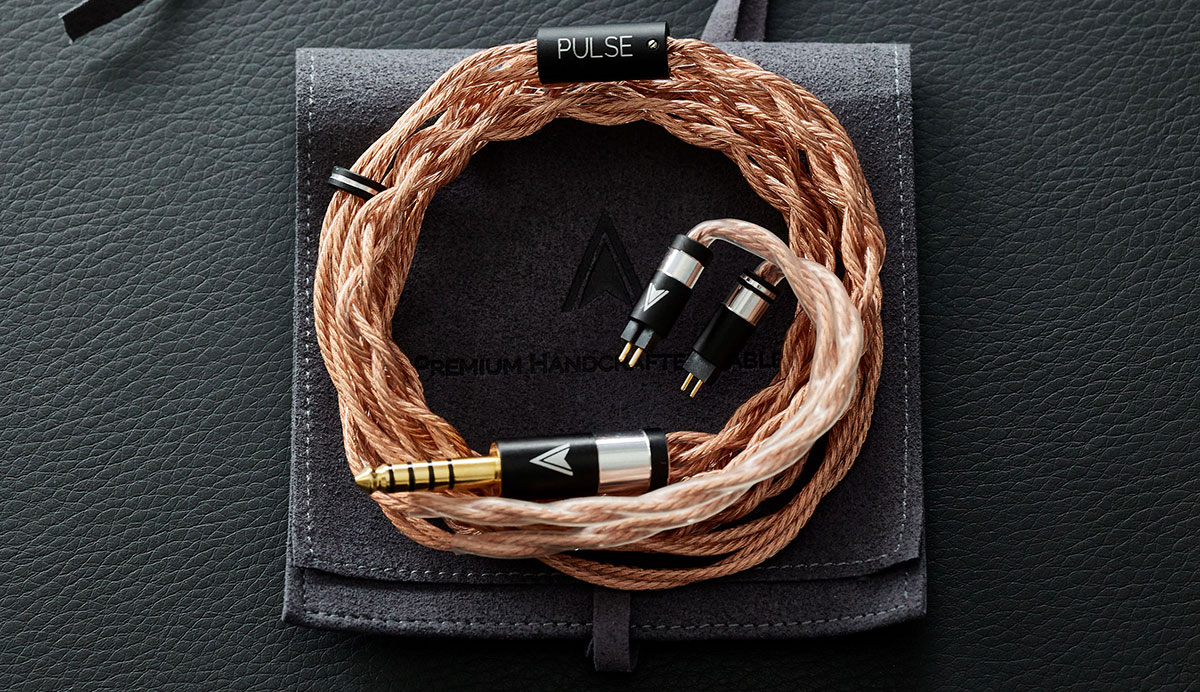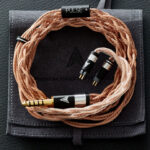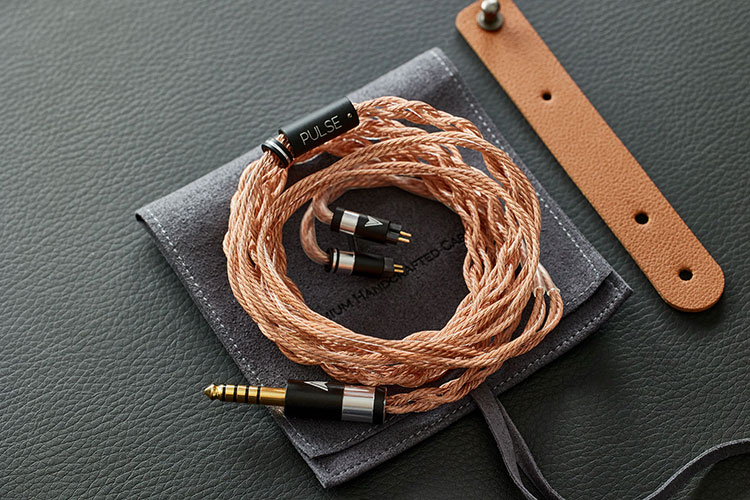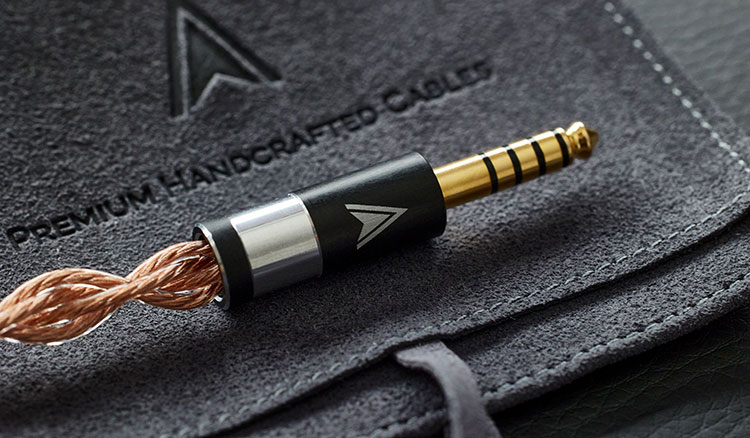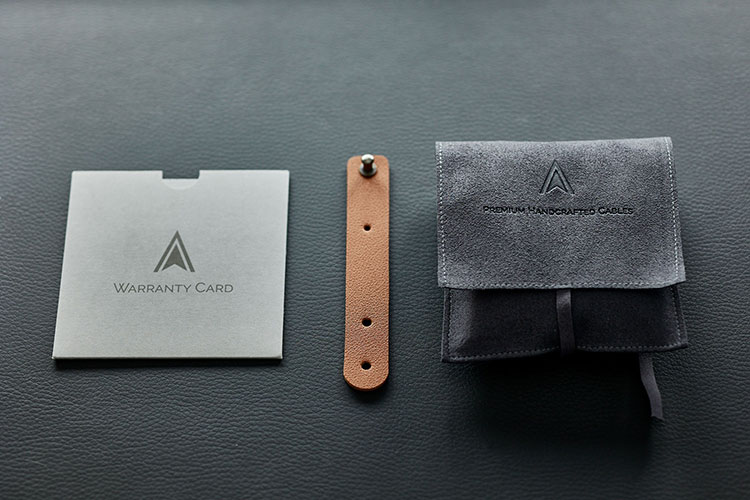For today’s review, we assess and compare the new Astral Acoustics Pulse. This is an aftermarket 4-wire 23AWG copper in-ear monitor cable. It has an SRP of $550.
For a limited time, you can buy the cable for $429 on the company website as part of their anniversary sale. You can also get an additional 5% off by entering “HF Pulse” in the promo code section at the checkout.
Disclaimer: This sample was sent to us in exchange for our honest opinion. Headfonics is an independent website with no affiliate status or links. We thank Astral Acoustics for this opportunity.
To learn more about Astral Acoustics products that have been previously assessed on Headfonics you can click here.
Note, that this feature follows our latest scoring guidelines which you can read up on here.
After Marcus’s last review on Astral Acoustics’s Reference Silver, we return again to their latest creation, the copper-based Pulse. Priced at $550, this is a very good-performing cable that sits comfortably beside some of the other midrange aftermarket cable competition.
In this review, we see how it fairs alongside other well-known cables such as the Plussound X8 Copper and the new Satin Audio Perseus. The overall result is a performance that delivers in terms of midrange presence whilst at the same time letting the bass flow with our tested IEMs.
Tech Highlights
Materials & Wire
The Pulse uses 6n LC-OFC Copper for its internal wiring which represents a very high level of purity. When measuring the level of purity of a cable, 1n represents the lowest level of purity whereas 7n illustrates the highest level. The higher the grade the better the performance of the cable, in theory.
The copper wiring is a 23 AWG gauge size which is on the hefty side of the usual 26AWG cable sweet spot favored by many manufacturers. It will be a shade thicker than your average aftermarket cable but it should have a noticeably lower level of resistance also.
In my opinion, the slightly larger size gives the cable a more robust and high-quality feel to it. At the same time, it is surprisingly soft and easy to bend hence the thickness of the wires does not present any issues such as microphonics during handling.
Geometry
The Pulse features a Type 6 Litz geometry which houses multiple bundles of type 4 wires twisted around the main fiber core. Within each type 4 wire, there is a separate fiber core that regulates consistent conductivity and reduces vibration.
The Pulse uses a multi-sized stranding structure. Generally, this means that certain strands have a different thickness to alter the signal: thinner strands work best for higher frequencies and thicker ones for lower frequencies.
Design
The Pulse has that classic and distinct copper hue on full show behind a soft and translucent PVC jacket. This gives the cable a shiny and smooth finish but it is thick enough that it feels durable and not too thick that it restricts movement or results in any cable noise during use.
The braiding of the cable is very good and well-executed. Each of the 4 wires is braided with sufficient tension so it will not easily pull apart nor leave uneven gaps throughout the cable.
The cable measures in at 1.2m long, is lightweight, and quite easy to bend with no noticeable memory retention. Combined with its consistent braiding and soft jacket, the Pulse is very enjoyable to use and easily wrapped away for storage.
Connectors & Jacks
The Pulse is available with various termination and connector options. Jack options include 2.5mm, 3.5mm, or 4.4mm. The test unit received had a 4.4mm termination which in my view was quite compact using a smaller barrel than other 4.4mm terminations on the market.
Surprisingly, only standard material 4.4mm plugs are available and there is no option to change the materials used. However, there are plenty of connector options including the standard 2pin 0.78mm, a QDC 2 pin, and MMCX.
Finishing
The Pulse features a matte black finish on the plug, splitter, cable ring, and connectors which are all made out of metal. There are hints of silver plating on the top of the plug, cable ring, and connectors.
The combination of matte black and copper colors is a fantastic match and it gives the cable a premium feel and appearance. To top it off, the word “Pulse” is engraved in white text on the back of the splitter in addition to the Astral Acoustics logo on the plug and connectors.
However, given the metal finish, this leaves the splitter, termination, and connectors prone to having visible scratches. There are no clearly marked left (L) and right (R) indicators on the connectors but instead this is determined by having the Astral Acoustics logo arrow facing outwards.
There is also a second layer of PVC or plastic-like coating which secures the ear hook’s shape. This allows the cable to have an additional amount of stiffness for the part of the cable which sits on top of the ear giving it an ergonomic fit.
Comfort on the Ear
Although the Pulse is a 23 AWG 4 wire cable, it is flexible and lightweight hence it is very comfortable to use on the ear. During testing, the cable was used for long and extended periods of listening and there were no instances of discomfort during this time.
Furthermore, there was no microphonics during use hence paving the way for carefree listening sessions. Even whilst wearing glasses, the Pulse managed to sit nicely on top of the ear during use which did not result in any discomfort.
The splitter is lightweight and does not pull on the cable too much which might cause discomfort above the ear. The splitter and chin cinch is well-positioned and allows for the cable to drop perfectly or be adjusted easily while in use.
Packaging & Accessories
The overall packaging and accessories which are supplied with the Pulse are minimalistic and simple. You get a very small square retail box that has a black matte finish to it similar to the cable finishing.
Within the box, there is a small suede pouch to store the cable in, a brown leather cable strap, and a warranty card. Personally, I find the pouch to be compact and sufficient for preventing scratches but will not offer a huge amount of protection from external knocks.
Performance Impressions
Summary
Overall, the Pulse has two goals: to enhance the resolution within the mid-range and provide a bit more gusto in the lows. The Pulse is suitable for those who prefer their music to have a forward and more aggressive sound.
When pairing the Pulse to the Empire Ears Legend EVO and Xenns Mangird Tea2 which were used for testing, the Pulse delivers an excellent level of dynamics but also a smoother midrange timbre compared to their stock cable pairings.
The effect on the soundstage varied between the two. The Mangird Tea2 sounded wider when paired with the Pulse compared to the Empire Ears Legend Evo which was narrower.
The Pulse presents treble in a neutral fashion and has a more limited influence on the IEM top-end which does not wholly surprise me given this is a copper wire.
Coloration
The most distinct impact from the Pulse is the increased power and stronger fundamentals which were evident when pairing it with the Empire Ears Legend EVO and Xenns Mangird Tea2.
Both IEMs tested had very good bass texture and slam when paired with the Pulse however it did result in a noticeably slower decay.
The Pulse teases out a more forward midrange also providing a slightly lusher smooth presentation of instruments and vocals. In particular, the sound of guitars being strung and female vocals become more fulsome yet still quite resolving on the Xenns Mangird Tea2.
The only area in which the Pulse does not color is the treble which is quite neutral being neither bright nor dark. Some pros and cons here but this will depend on your preferences.
From my own perspective, I would have preferred an enhancement to the treble quality and extension which would have complemented the smoother midrange perfectly.
Staging & Dynamics
The Pulse’s staging is impressive producing a wide soundstage on both the Empire Ears Legend EVO and the Xenns Mangird Tea2.
However the staging on both IEMs is wider than it is tall and although there is still some stage height, it does feel limited in this respect. However, the Pulse does a very good job in positioning instruments around the soundstage, giving them some good separation so neither IEM feels veiled or smeared sounding.

